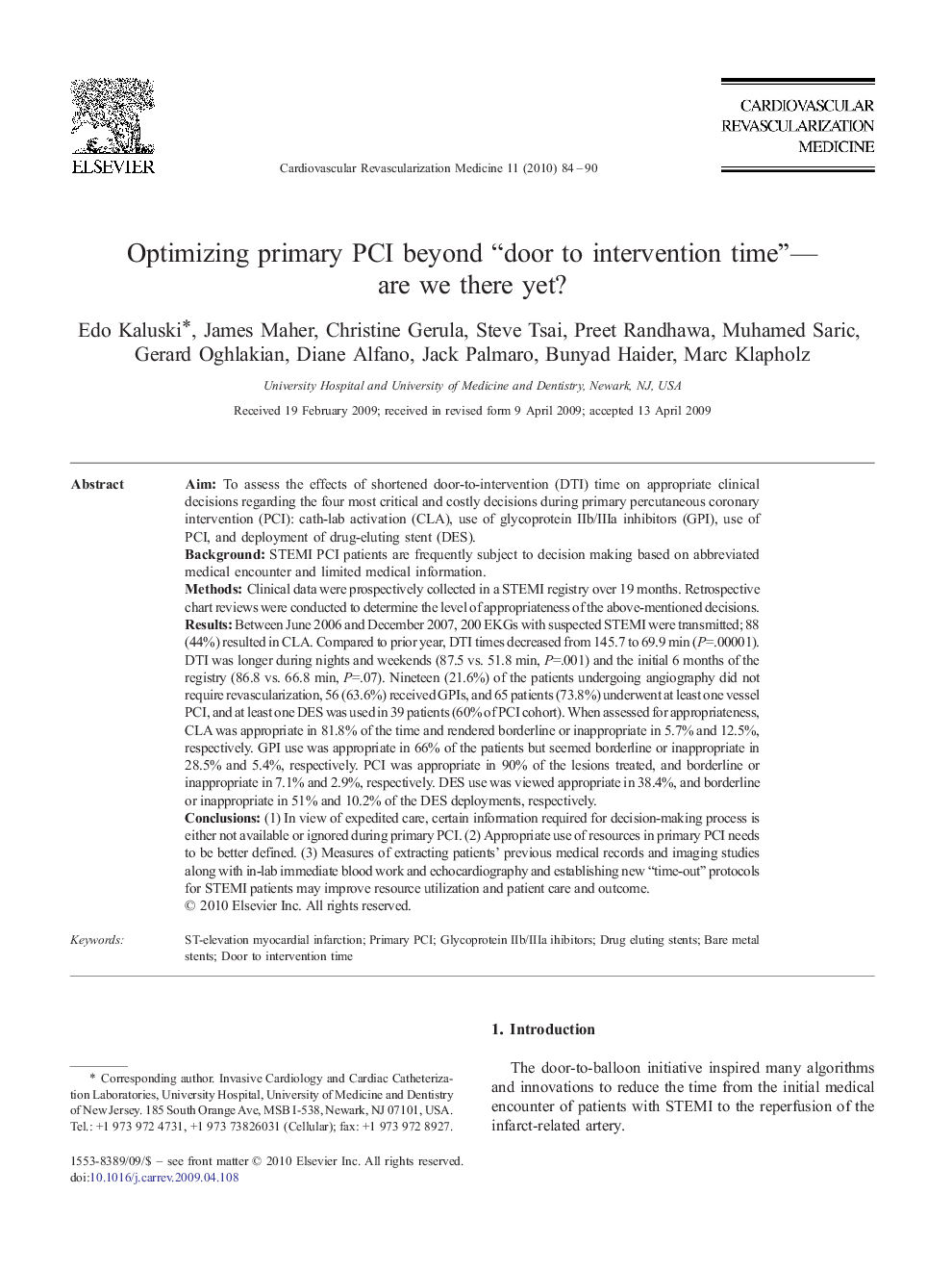| کد مقاله | کد نشریه | سال انتشار | مقاله انگلیسی | نسخه تمام متن |
|---|---|---|---|---|
| 2837425 | 1164898 | 2010 | 7 صفحه PDF | دانلود رایگان |

AimTo assess the effects of shortened door-to-intervention (DTI) time on appropriate clinical decisions regarding the four most critical and costly decisions during primary percutaneous coronary intervention (PCI): cath-lab activation (CLA), use of glycoprotein IIb/IIIa inhibitors (GPI), use of PCI, and deployment of drug-eluting stent (DES).BackgroundSTEMI PCI patients are frequently subject to decision making based on abbreviated medical encounter and limited medical information.MethodsClinical data were prospectively collected in a STEMI registry over 19 months. Retrospective chart reviews were conducted to determine the level of appropriateness of the above-mentioned decisions.ResultsBetween June 2006 and December 2007, 200 EKGs with suspected STEMI were transmitted; 88 (44%) resulted in CLA. Compared to prior year, DTI times decreased from 145.7 to 69.9 min (P=.00001). DTI was longer during nights and weekends (87.5 vs. 51.8 min, P=.001) and the initial 6 months of the registry (86.8 vs. 66.8 min, P=.07). Nineteen (21.6%) of the patients undergoing angiography did not require revascularization, 56 (63.6%) received GPIs, and 65 patients (73.8%) underwent at least one vessel PCI, and at least one DES was used in 39 patients (60% of PCI cohort).When assessed for appropriateness, CLA was appropriate in 81.8% of the time and rendered borderline or inappropriate in 5.7% and 12.5%, respectively. GPI use was appropriate in 66% of the patients but seemed borderline or inappropriate in 28.5% and 5.4%, respectively. PCI was appropriate in 90% of the lesions treated, and borderline or inappropriate in 7.1% and 2.9%, respectively. DES use was viewed appropriate in 38.4%, and borderline or inappropriate in 51% and 10.2% of the DES deployments, respectively.Conclusions(1) In view of expedited care, certain information required for decision-making process is either not available or ignored during primary PCI. (2) Appropriate use of resources in primary PCI needs to be better defined. (3) Measures of extracting patients' previous medical records and imaging studies along with in-lab immediate blood work and echocardiography and establishing new “time-out” protocols for STEMI patients may improve resource utilization and patient care and outcome.
Journal: Cardiovascular Revascularization Medicine - Volume 11, Issue 2, April–June 2010, Pages 84–90